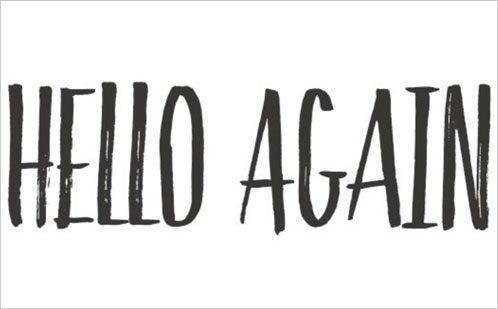Road-tested tips for lead generation at conferences
 To most salespeople, there is no better way to prospect in-person than conferences. For solopreneurs and entrepreneurs, especially at the beginning of their journey, conferences are an unparalleled medium to find prospective customers, employees, advisors, business partners, and even to raise funds. Contrarily, conferences can end up over-hyped, energy-draining with generic content and few opportunities to make meaningful connections. And that’s a bummer. To avoid that, we all need to work hard for a high conference ROI.
To most salespeople, there is no better way to prospect in-person than conferences. For solopreneurs and entrepreneurs, especially at the beginning of their journey, conferences are an unparalleled medium to find prospective customers, employees, advisors, business partners, and even to raise funds. Contrarily, conferences can end up over-hyped, energy-draining with generic content and few opportunities to make meaningful connections. And that’s a bummer. To avoid that, we all need to work hard for a high conference ROI.
As a sales data scientist, I always wonder which activity could help me make the most of a conference - it’s my job to figure out what works best in both qualitative and quantitative ways. By far, the highest ROI activity has been getting a guest speaker spot or facilitating a panel – people come to talk to me instead of me struggling to seek them out. But getting these spots is not easy and conferences run out of these opportunities months in advance However, if you’re like most conference attendees and don’t seek out speaking engagements, there are plenty of things you can do to maximize the value of conference experience.
Here are my road-tested tips that are low-investment but generate high-returns for prospecting at conferences. Just like how restaurants mark their menu items with “gluten-free”, “vegetarian”, or “spicy” symbols, I shall use the following to help guide you.
- #SR is for “Sales Reps”
- #IF is for “Introvert-Friendly”
- #RCH is for “Recovering from the Conference Hangover”
- #SMW is “Social Media Worthy”
- #0$ is for the “low-budget entrepreneur”
1. Build a mutual relationship with conference organizers and offer help.
As a conference attendee, you can actually help the organizers do their jobs better and make the event successful for them. Share your success criteria with them (like needing to set up at least 10 meetings before the conference or generating 50 high-quality leads during the lunch session of the conference). Most organizers will appreciate your investment of time and effort and will go the extra mile to help you succeed. Why not leverage the help of people who can give you shortcuts and jump your place way ahead of others in the queue? More importantly, you would be building organizers as your contacts – a rewarding relationship that will pay you back many times over! Oh and first, huge thanks to producers like OutBound, Gartner CSO and Sales Leader Conference, Sales 3.0, SAMA/Strategic Account Management Conference for being game-changers and change-makers, and helping us take business to the next level. #SR #0$ #IF
2. Reach out to speakers, attendees and exhibitors..
Offer info they may be interested in. Ask if you can have a quick chat during the conference. The key is not to set up a meeting to sell/pitch to them, but offer some help in a genuine manner. Be considerate and realize that speakers and exhibitors have their own agenda and have the pressure of the speaking weighing on their shoulders, let alone the prep time, waiting and closing the loop with their own conference contacts. Respect their time limitations, work with them and offer to reconnect after the conference. Chances are that they become your best spokespeople and promote you (or your product) more efficiently than you can by yourself.

3. Be solo.
Limit your time with colleagues and friends unless they can help you generate leads. The time you spend with them is the time you lose from meeting prospects and making new connections. Personally, I prospect better when I am solo. So, I stay away from colleagues and use the time to do my own thing. Only when I need to take a break do I come back to check in with colleagues and share my updates. The last thing you want to do is to be on your phone and come across as aloof. People will not like to come talk to you. It can be a frightening undertaking and you may have FOMO moments. But that’s ok. Once you get the hang of it by doing it a couple of times, you’ll soon become quite efficient.
Hang out where people are and start small talk. Stand by a coffee/snack station or a cell-phone charger station and strike up conversations with strangers. Go to the restroom often and see if you can bump into someone on their way out. The idea is to seek out people when they don’t have their guard up. Another tip is to talk to catering service staff (they know where the important meetings are happening). Depending on the conference, you may even hang out by the press room and talk to journalists and bloggers. Sometimes they like fresh input for a story from a lesser-known source. You may just get lucky and get featured in print! #SR #SMW #0$
4. Hang around the smoking area.
Carl Jung described introverts as those “relaxing into extroversion” when they meet people and are happy to make small talk. In my experience, the designated smoking area is a Carl Jung zone - it seems to relax people and even change introverts into willing participants of small talk. Plus, there always seems to be someone there even during key-note sessions so you never run out of people to talk to. While this may not come naturally to you, I highly recommend it. Personally, I have had my best success near designated smoking areas. Smokers are usually quite relaxed and very open to conversations for those few minutes. No one likes to feel lonely and another friendly face (you) might be just the thing they need to get their (and your) business creativity in full swing. If you don’t smoke and still desperately need to prospect, just stand there with a lighter. You are almost guaranteed to meet someone interesting and possibly a good qualified lead you can follow-up with later. #SR #IF #0$ #RCH *Reader discretion is advised - Smoking and breathing in other people's smoke – can/may trigger health issues.
5. Wear conversation starters

Dressing professionally doesn’t always mean you wear the same suits like everyone else does. A stand-out watch, interesting kicks, statement glasses, cell phone cases or even a handmade anklet made with a meteor rock and given to you by the medicine man when you got sick during a trip to Africa will do the trick. People notice these things and you may find it easier to start in a light-hearted way to catch their attention. A lot can be said from the way a person dresses, so why not pick something that represents “you” and let the accessories do the talking. #IF #SMF
6. Leave something memorable - business card/lottery ticket combo.
This may sound cheesy and outdated as most conferences have apps to exchange business cards, but it is memorable and catchy. I normally buy ten $1 lottery tickets, staple one to my business card, and hand out to people I really want to get back to. It’s not about the amount, it’s about making things easy for me to start a conversation, to be different and gives a reason to get back to them. On average, I connect with seven out of ten people who got my lottery business card. Two months later, I close one deal. 70% response rate, 10% close rate with $10 investment. #SR #IF #0$
7.Get in the right category.
I've attended my fair share of conferences in all sizes in several industries and locations. Regardless of the type of conference, it all comes down to three questions people ask: 1. Where are you from?, 2. What do you do?, and 3. What does your company do? The first question is just a conversation starter. The second and the third question are what I call the “category” question – people only focus on your answer for 10 seconds and categorize you as either “conversation-worthy” or “the rest”. Before any conference, I practice my answer to make it crisp and short and without buzz words. As a sales data scientist, I deliberately explain my work and business in the simplest way with stats like growth rate and the awards we won. You know you’re in the right category when the person either starts asking more questions or starts sharing experiences from their own company.
8. Interview.
During a conference, have a little interview project, i.e., finding people close to your target persona and asking ‘lead-qualification’ questions you’d use daily. In my case, the question is “Is your sales pipeline clean?” – obviously an awkward question to ask strangers. With a selfie stick, I interviewed more than 80 people at a 3-day sales conference. It was fun, helped me stand out at the conference and interviewees tweeted my interview. More importantly, those interviews helped me conquer the fear of rejection, even if temporary. #SR #0$ #SMW
9. Find line buddies.
 Take advantage of waiting in line. If the conference provides lunch, don’t be the first one standing in line. Waiting in line gives you a chance to talk to people for at least a few minutes. If you enjoy talking to your line buddy, ask to have lunch together and learn more about her/him or their business. Whether waiting in line for a keynote session or for a cab, there’s always some more conference value you can derive by talking to your line buddies. #0$ #IF #RCH
Take advantage of waiting in line. If the conference provides lunch, don’t be the first one standing in line. Waiting in line gives you a chance to talk to people for at least a few minutes. If you enjoy talking to your line buddy, ask to have lunch together and learn more about her/him or their business. Whether waiting in line for a keynote session or for a cab, there’s always some more conference value you can derive by talking to your line buddies. #0$ #IF #RCH
10. Follow up immediately.
 Strike while the iron is hot and follow up with contacts both during and immediately after the conference. This is a no-brainer, but it is hard to follow through. In fact, most conference attendees just drop the ball entirely and never follow up at all. I tested many different formats to follow up – connecting via social media, email, phone call and sending swag. I found that the format did not matter much as long as I took two actions: (1) Sending a memorable message during the conference without asking for next steps and (2) following up again within three days after the conference. Some say personalizing the message is key for connecting post-event. I’d say “personalizing” is not enough, at least with my prospects – C-Suite executives. Creating a memorable message means – 1. Sharing useful data/stats/informative article, 2. Offering further information or help, 3. Making relevant introductions to connect people with others 4. Sharing/re-tweeting your contact’s posts via with your own social media network. #SR #IF #0$
Strike while the iron is hot and follow up with contacts both during and immediately after the conference. This is a no-brainer, but it is hard to follow through. In fact, most conference attendees just drop the ball entirely and never follow up at all. I tested many different formats to follow up – connecting via social media, email, phone call and sending swag. I found that the format did not matter much as long as I took two actions: (1) Sending a memorable message during the conference without asking for next steps and (2) following up again within three days after the conference. Some say personalizing the message is key for connecting post-event. I’d say “personalizing” is not enough, at least with my prospects – C-Suite executives. Creating a memorable message means – 1. Sharing useful data/stats/informative article, 2. Offering further information or help, 3. Making relevant introductions to connect people with others 4. Sharing/re-tweeting your contact’s posts via with your own social media network. #SR #IF #0$
11. Reconnect with the conference organizers.
Share your outcomes with them - both positives and negatives. They too want to hear from you first-hand, in addition to post-event surveys they send out. Good conference producers typically go above and beyond and will welcome a personal connect with you on your experience. Be part of their post-event activities (e.g., webinar, social media, focus groups). Discuss speaking engagements for future events and seek their help. The conference is not over until you say it’s over. You can still get a lot more miles out of a conference – even after the conference.
You may wonder which activity typically works best. For me, as an ardent data scientist, I keep records - lots of them! I look at all the variables that impact my ROI from conferences: from the registration fees, travel/lodging, conference sponsorships and right to the time I spent in post-event follow ups. It turns out that the most effective low-investment/high-return activity for me at a conference has been, to my surprise as a non-smoker, is hanging out at the smoking areas. I have met inspiring customers, advisors, investors, future employees and even close friends and industry contacts at this most unexpected spot. I’ve learned a lot from them. My journey continues, because I want to provide value back to them. Thank you for smoking!
P.S. I’d love to hear about how others boost the conference experience and ROI, especially from female-perspectives. In the B2B tech industries, it’s still rare to see women in sales leadership positions (This is not my opinion. I have data to support – The Case for Gender Diversity in Sales by Garner ). It makes it even harder to meet female colleagues when it comes to my field – Data. Mixing the three, 1. Industry = Tech, 2. Function = Sales, 3. Field = Data, leaves me few opportunities to connect with other women. I know they exist. I’d love to hear from you if you’re out there.
About the author

Satoko Miller
Satoko Miller is a sales data scientist. After nearly drowning in the ocean of big data, she now swims in smaller, cleaner data lakes. She visualizes, analyzes data and builds predictive models, lots of them. She is a child of war orphans. Growing up hearing about wars and survival, she believes in providing value to the society by supporting survivors of all sorts. Contact Satoko on Linkedin.